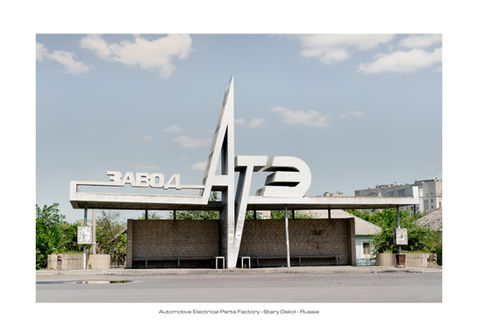
September 10, 2025 | Art & Culture
CHRISTOPHER HERWIG: BEAUTY in the EVERYDAY
words Onur Basturk
photos Christopher Herwig
From 27 September to 12 October 2025, 212 Photography Istanbul returns for its 8th edition, bringing photography and art to nearly 30 venues across the city. Since its founding in 2018, the festival has gone beyond photography to embrace visual storytelling across disciplines, introducing audiences to diverse talents from around the world.
Among this year’s highlights is Christopher Herwig, renowned for documenting Soviet-era architecture and uncovering beauty in the everyday. In this conversation, he reflects on his journeys and the story behind his iconic bus stop series.

JOURNEYS IN PHOTOGRAPHY
Looking back on your journey from your early years in photography to today, which experience has been the most transformative for you?
When I biked from London to St. Petersburg in 2002, I anticipated that I might not see many stereotypical tourist attractions along the way, so I created a game for myself: I had to photograph something every hour while biking. This forced me to look for beauty and magic in the everyday things around me—either by finding the special qualities that made them unique or by composing the subjects in a way that made the ordinary appear like a superhero.
Having travelled to more than 90 countries, which geography has most changed your perspective on photography?
I love photographing in the far north of North America and Europe in the summer, when the sun takes forever to set and the light stays magical for several hours. In contrast, when I’m near the equator, I always feel rushed and unsatisfied, as the light changes so quickly during sunrise and sunset.
THE ORIGINS OF A SOVIET BUS STOP STORY
How did the idea of photographing Soviet-era bus stops first come about?
I first noticed the bus stops while biking through Lithuania, Latvia, and Estonia, and then into Russia. I started a small collection at that point. But after moving to Kazakhstan and spending three years traveling throughout Central Asia, it felt natural to expand the collection as I discovered more along the way. Eventually, I was hooked and began traveling with the sole purpose of finding bus stops throughout all former Soviet countries.
Do you see this project merely as an architectural archive, or also as a window into the socio-cultural fabric of the period?
I don’t see the project so much as an architectural archive. For me, the word “archive” feels frozen in the past. I see the bus stop designs as opportunities for individual artists to express themselves. Many of them feel like works in progress, in the sense that I hope people see the images and designs, use them as inspiration, and build on them, allowing them to evolve.
I also believe that some of these bus stops can serve as a window into the lives of people who lived during the Soviet Union, on an individual level, separate from the broader historical narrative. I feel I can connect with the bus stop designs through the hopes and dreams of these creative individuals.

In your work, there is a clear effort to find beauty in the “ordinary objects of everyday life.” In your opinion, what kinds of stories can a bus stop tell us?
For me, bus stops can be quite different from one another, and from the research we’ve done, their backstories vary widely—some were state-organized propaganda projects, while others were initiated and built by locals for their own enjoyment. This variety is what attracts me: seeing the different creative ideas expressed. For example, in Niitsiku, Estonia, a group of men from the local furniture factory decided they wanted a bus stop, and they wanted it to be something special they could be proud of. It was not a state initiative; they did it for themselves and built a fabulous bus stop they called “the Spider.”
From hitchhiking from Vancouver to Cape Town, to walking across Iceland, to cycling through Europe—how did these journeys shape your relationship with photography?
Being able to travel overland at a relatively slow pace is a luxury—something I’m very fortunate and grateful to have experienced for many years. Seeing the places in between the more traditionally famous locations gave me the chance to notice repeating patterns in the details that caught my eye, while also absorbing things at a more relaxed, natural pace.
What has been the most unforgettable moment you experienced while shooting in remote and challenging geographies?
In 2000, a small group of us were hiking in the far north of the Canadian province of Saskatchewan, looking for a very remote area with rare sand dunes. We reached the dunes, photographed them, and had arranged for a floatplane to pick us up on the shore of Lake Athabasca. But we got stuck in a storm for days. Since we were carrying a lot of heavy camera equipment, we had packed barely enough food for the trip and ran out once we were delayed. Although it may have only been a couple of days living off local berries, it felt like forever until the plane finally found us.
Lessons learned: pack light, bring extra food, and always be prepared for sudden, extreme weather.






